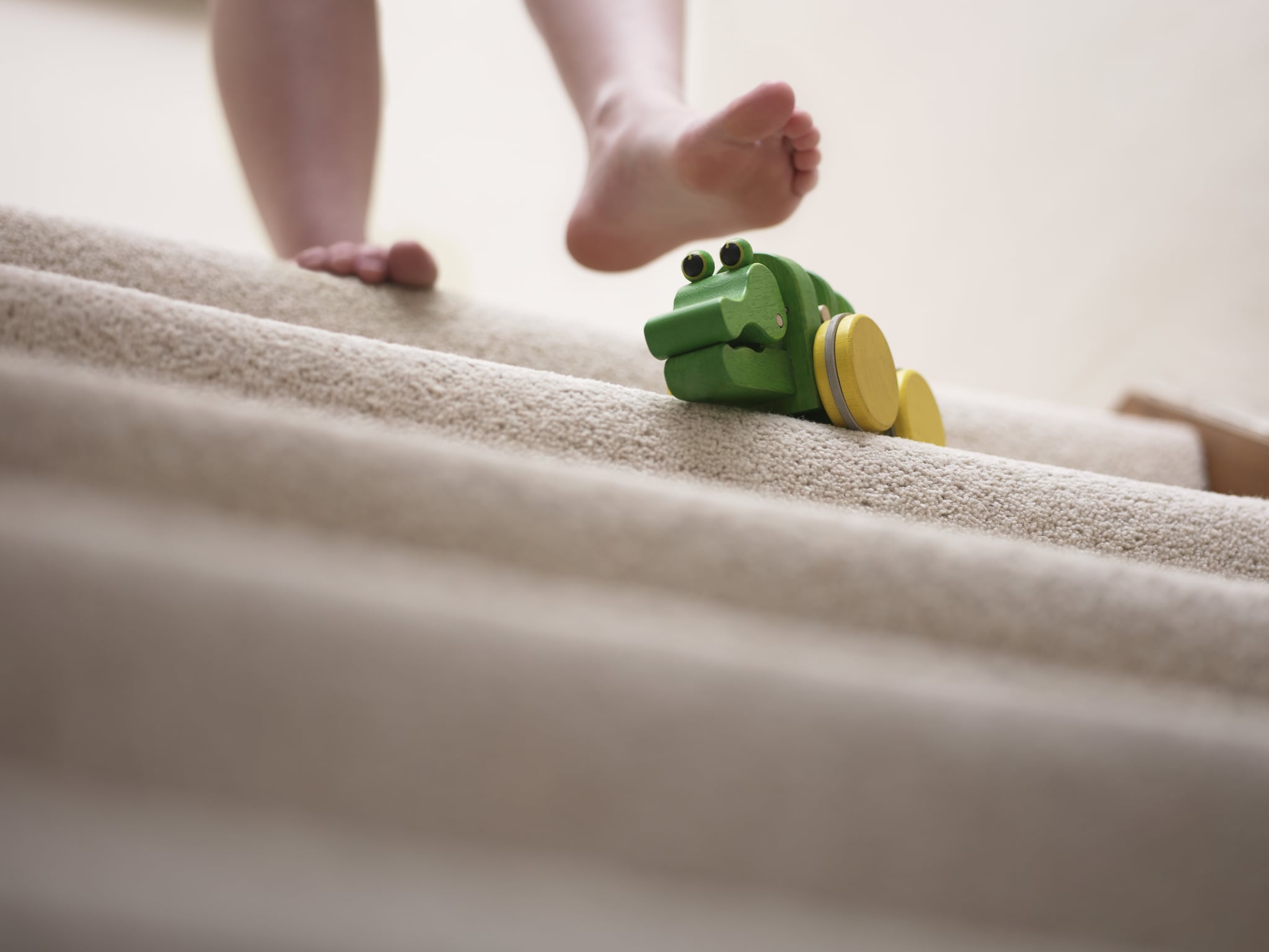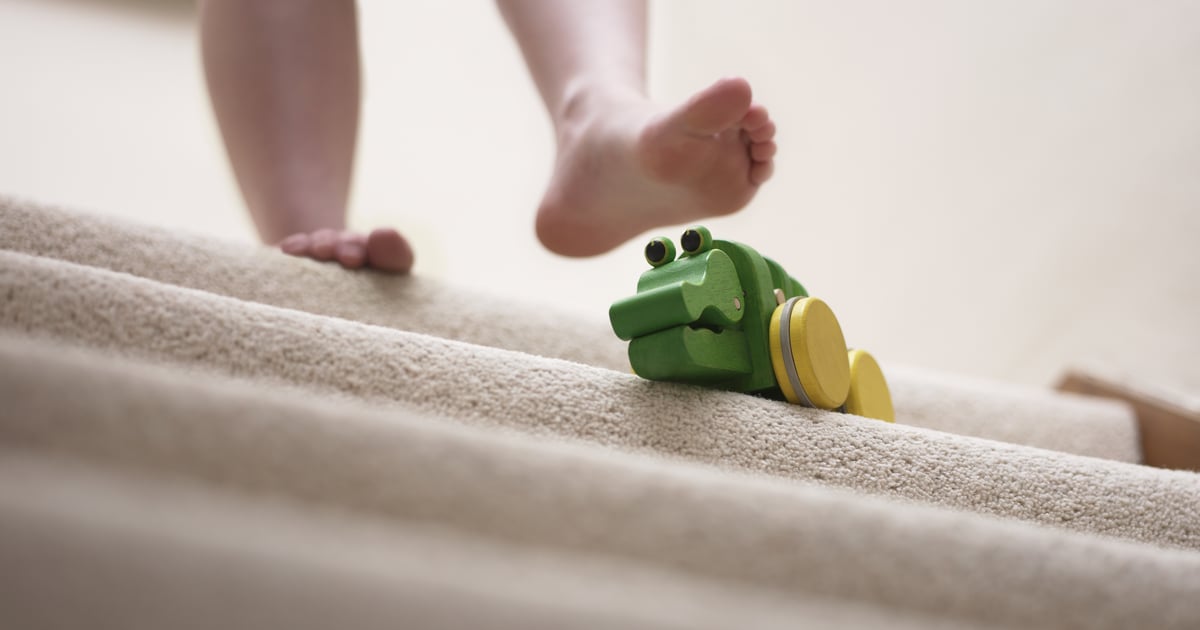Products You May Like

Tripping over objects on the floor, bumping into things often, having your clothing caught on doors or drawers — these are all mishaps that are usually just attributed to being clumsy or checked out. But in some children and adults, it can be a sign of sensory low registration.
“Sensory low registration is a term used to describe a person’s brain processing information from their senses in a different way than most people,” Vicky Robinson, children’s occupational therapist, tells POPSUGAR. It’s a “result of the brain’s sensory system losing track of or not paying attention to the sensations it receives,” explains Alisha Grogan, licensed pediatric occupational therapist. Sometimes it affects one particular sense, and other times it affects several or even all of the senses, she says.
This means someone with low registration may have difficulty noticing or reacting to sensory information like sounds, smells, or touch, and maybe all three, Robinson explains. Sensory low registration is typically diagnosed by an occupational therapist who specializes in sensory processing disorders, but being able to spot the signs in your little one, or even in yourself, can be crucial in flagging them to a specialist early on so you can access helpful therapies and interventions.
Ahead, learn more about sensory low registration, how low registration is diagnosed, and signs of low registration in children and adults — plus, what you can do about it.
What Are Common Signs of Low Registration in Children and Adults?
“Children with sensory low registration may display a variety of behaviors that indicate their brains are not processing sensory information as efficiently as their peers,” Robinson explains. The same goes for adults. It really depends on the individual and their specific sensory processing difference.
According to Robinson, common signs of low registration in adults include:
- High pain tolerance: Shows little reaction to pain or discomfort, or may not realize they’re injured.
- Difficulty noticing changes in environment: Doesn’t notice changes in the environment (think: temperature, lighting, or noise level).
- Need for intense sensory input: Tends to seek out intense sensory experiences, like loud music, bright lights, or spicy foods, to feel sensations more strongly.
- Lack of response to sensory stimuli: Shows no reaction to stimuli like a knock at the door, the phone ringing, or a person calling their name.
- Tendency to “zone out”: Staying alert and focused can be difficult, and “spacing out” can happen often.
- Difficulty with fine motor tasks: Fine motor skills, such as threading a needle or tying a shoelace, can be a challenge.
Signs of low registration are similar in children, including high pain tolerance, difficulty staying alert or focused, slow reaction times, lack of awareness of surroundings, and preference for intense sensory input (like spinning or jumping).
How Is Low Registration Diagnosed?
“Low registration is not an official diagnosis but falls under a larger category of sensory processing disorder (SPD),” Grogan explains. SPD is not officially recognized in the Diagnostic and Statistical Manual of Mental Disorders (the handbook used by healthcare professionals to diagnose mental disorders), but many professionals do acknowledge and give this diagnosis after an evaluation of a patient’s sensory processing skills, she adds.
Why Is Low Registration Commonly Overlooked?
Because low registration is part of a larger diagnosis of SPD, which isn’t an official diagnosis, trained clinicians don’t always look for it, Grogan says. What’s more, “the signs for low registration are often blamed on personality traits,” she explains. Both kids and adults who display signs of it are often described as low-key or clumsy. “They typically aren’t the kids having tantrums, meltdowns, or bouts of hyperactivity,” Grogan says. And adults with low registration have likely already learned to “compensate for their sensory differences in ways that make them less noticeable to others,” Robinson says.
Can You Improve Low Registration?
Occupational therapists can improve your low registration through “sensory integration activities” designed to stimulate different parts of the brain. This might include tactile activities that involve touch (like engaging with texture materials such as sand, shaving cream, or playdough) or heavy work activities that involve pushing, pulling, lifting, or carrying heavy objects, Robinson says. An OT may also recommend visual activities like watching a lava lamp or a bubble tube.
The key is to provide the patient with opportunities for more intense sensations that their brain will register, and “as a result, kids and adults with low registration will be able to focus and participate in the activities of their life more fully,” Grogan says.
